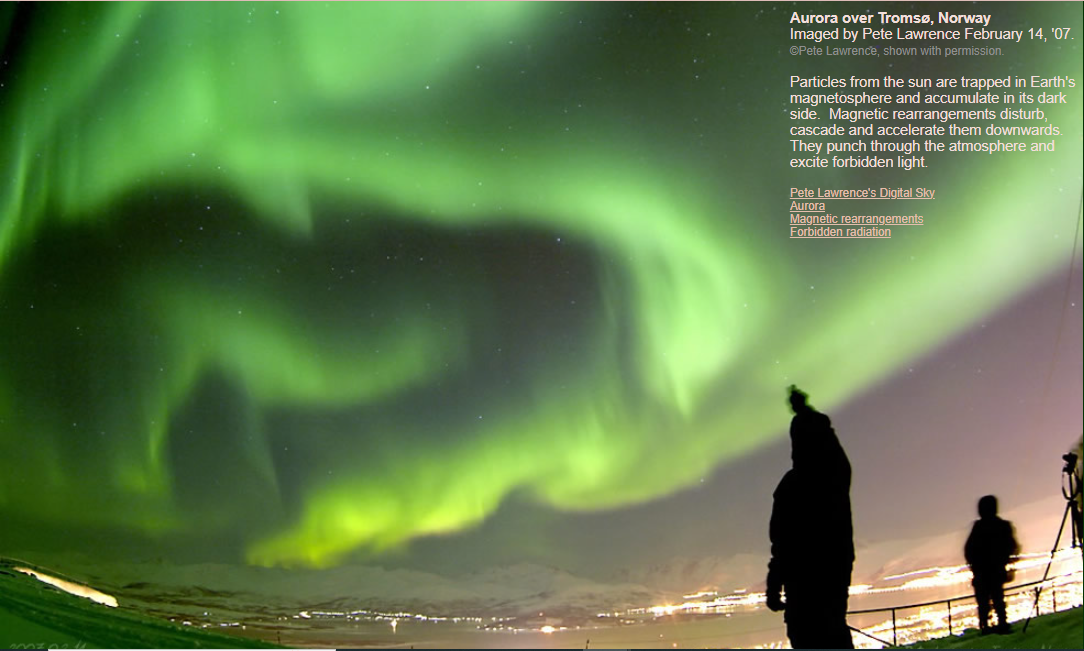Aurora ~ Tromsø
Aurora ~ Tromsø: A Breathtaking Natural Phenomenon
Tromsø, Norway, is renowned for its stunning displays of the Northern Lights, also known as the Aurora Borealis. This captivating natural phenomenon attracts visitors from all over the world who flock to Tromsø in hopes of witnessing the mesmerizing dance of colors in the night sky. While the existing content briefly touches on the topic, let's delve deeper into the science behind the Aurora and why Tromsø is a prime location for such breathtaking displays.
The Sun's Particles and Earth's Magnetosphere
Particles emitted by the sun, including electrons and protons, constantly bombard our planet. However, thanks to Earth's magnetosphere, a protective magnetic field that surrounds our planet, most of these particles are deflected away. Some particles, however, manage to penetrate the magnetosphere and become trapped within it.
Magnetic Rearrangements: A Cosmic Disturbance
Magnetic rearrangements within Earth's magnetosphere can occur due to various factors, such as interactions with the solar wind or disturbances caused by events on the sun's surface. These rearrangements cause a cascade effect, accelerating the trapped particles towards Earth's atmosphere.
The Dance of Forbidden Light
As these energetic particles plunge through Earth's atmosphere, they collide with atoms and molecules of gases such as oxygen and nitrogen. These collisions excite the atoms, causing them to release energy in the form of light. However, not all light is created equal. Some of this energy is emitted as visible light, creating the stunning displays of the Aurora that grace the skies above Tromsø.
The Science of Colors
The colors seen in the Aurora are a result of the specific gases involved in the process and their altitudes within the atmosphere. Oxygen atoms at lower altitudes emit green and red light, while those at higher altitudes produce blue and purple hues. Nitrogen molecules, on the other hand, are responsible for the fainter, less prominent colors, such as pink and purple.
Tromsø: An Ideal Aurora Viewing Destination
Tromsø's geographical location makes it an ideal destination for witnessing the Aurora Borealis. Situated within the Arctic Circle, the city is located at a high latitude, which increases the likelihood of experiencing the Northern Lights. Additionally, Tromsø's relatively low levels of light pollution and clear skies contribute to optimal viewing conditions.
The Seasonal Dance
The appearance of the Aurora in Tromsø follows a seasonal pattern. The months from September to April offer the best chances of witnessing this captivating phenomenon. During this period, Tromsø experiences long nights and extended periods of darkness, providing ample opportunities for the Northern Lights to illuminate the sky.
The Quest for the Aurora
Visitors to Tromsø eager to witness the Aurora often embark on nighttime expeditions in search of the best vantage points. These excursions may involve venturing into remote areas away from city lights or even taking a cruise to catch a glimpse of the Aurora dancing above the Arctic waters. Experienced guides and tour operators are available to help visitors maximize their chances of witnessing this awe-inspiring spectacle.
Capturing the Magic
Photographers and enthusiasts flock to Tromsø armed with cameras, tripods, and a desire to capture the beauty of the Aurora. Long-exposure photography allows for stunning images that showcase the vibrant colors and intricate patterns of this celestial ballet. The city's picturesque landscapes, combined with the Northern Lights, provide an enchanting backdrop for photographers seeking to immortalize this natural wonder.
Beyond the Northern Lights
While the Aurora Borealis is undoubtedly the main attraction in Tromsø, this Arctic city offers much more to explore. Visitors can engage in a wide range of winter activities such as dog sledding, snowshoeing, or even embarking on a reindeer safari. Tromsø is also home to fascinating museums, including the Polaria Arctic Experience Center and the Northern Lights Planetarium, where visitors can learn more about the science and mythology surrounding the Aurora.
A Reminder of Earth's Wonders
The Aurora Borealis is a powerful reminder of the immense beauty and wonders our planet has to offer. The dance of colors above Tromsø serves as a testament to the intricate interplay between Earth's magnetic field, the sun's particles, and our atmosphere. Whether you are a seasoned traveler or a curious adventurer, witnessing the Aurora in Tromsø is an experience that will leave you in awe of the magnificence of the natural world.

Aurora over Tromsø, Norway
Imaged by Pete Lawrence February 14, '07.
©Pete Lawrence, shown with permission.
Particles from the sun are trapped in Earth's magnetosphere and accumulate in its dark side. Magnetic rearrangements disturb, cascade and accelerate them downwards. They punch through the atmosphere and excite forbidden light.
Pete Lawrence's Digital Sky
Aurora
Magnetic rearrangements
Forbidden radiation
Note: this article has been automatically converted from the old site and may not appear as intended. You can find the original article here.
Reference Atmospheric Optics
If you use any of the definitions, information, or data presented on Atmospheric Optics, please copy the link or reference below to properly credit us as the reference source. Thank you!
-
<a href="https://atoptics.co.uk/blog/aurora-troms/">Aurora ~ Tromsø</a>
-
"Aurora ~ Tromsø". Atmospheric Optics. Accessed on April 20, 2024. https://atoptics.co.uk/blog/aurora-troms/.
-
"Aurora ~ Tromsø". Atmospheric Optics, https://atoptics.co.uk/blog/aurora-troms/. Accessed 20 April, 2024
-
Aurora ~ Tromsø. Atmospheric Optics. Retrieved from https://atoptics.co.uk/blog/aurora-troms/.